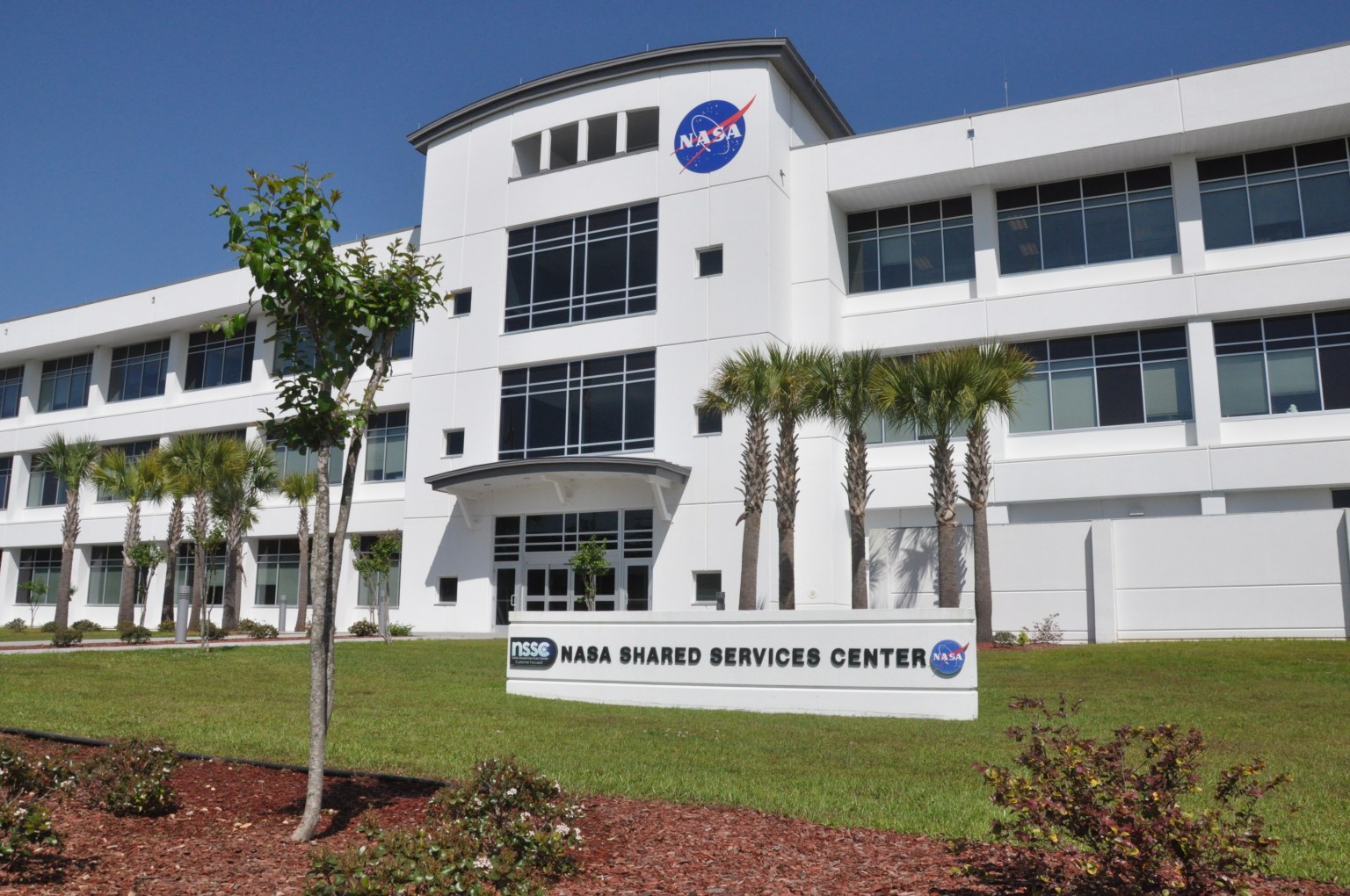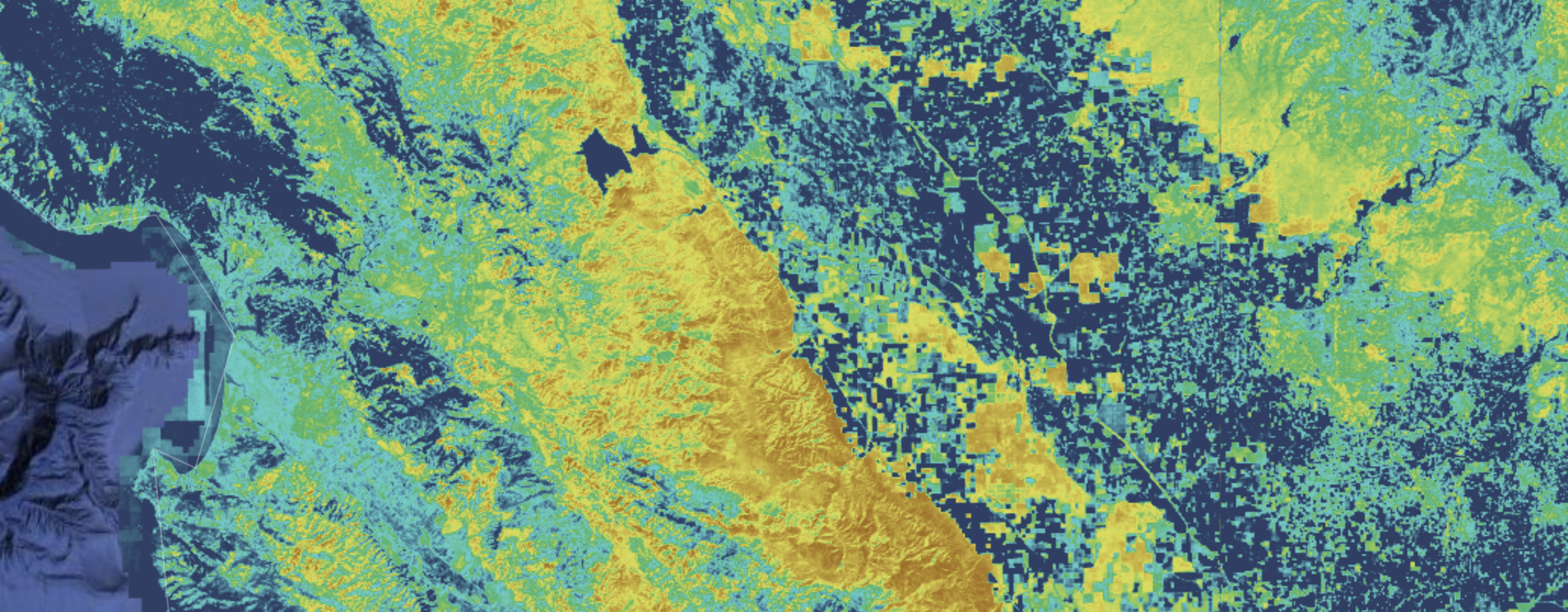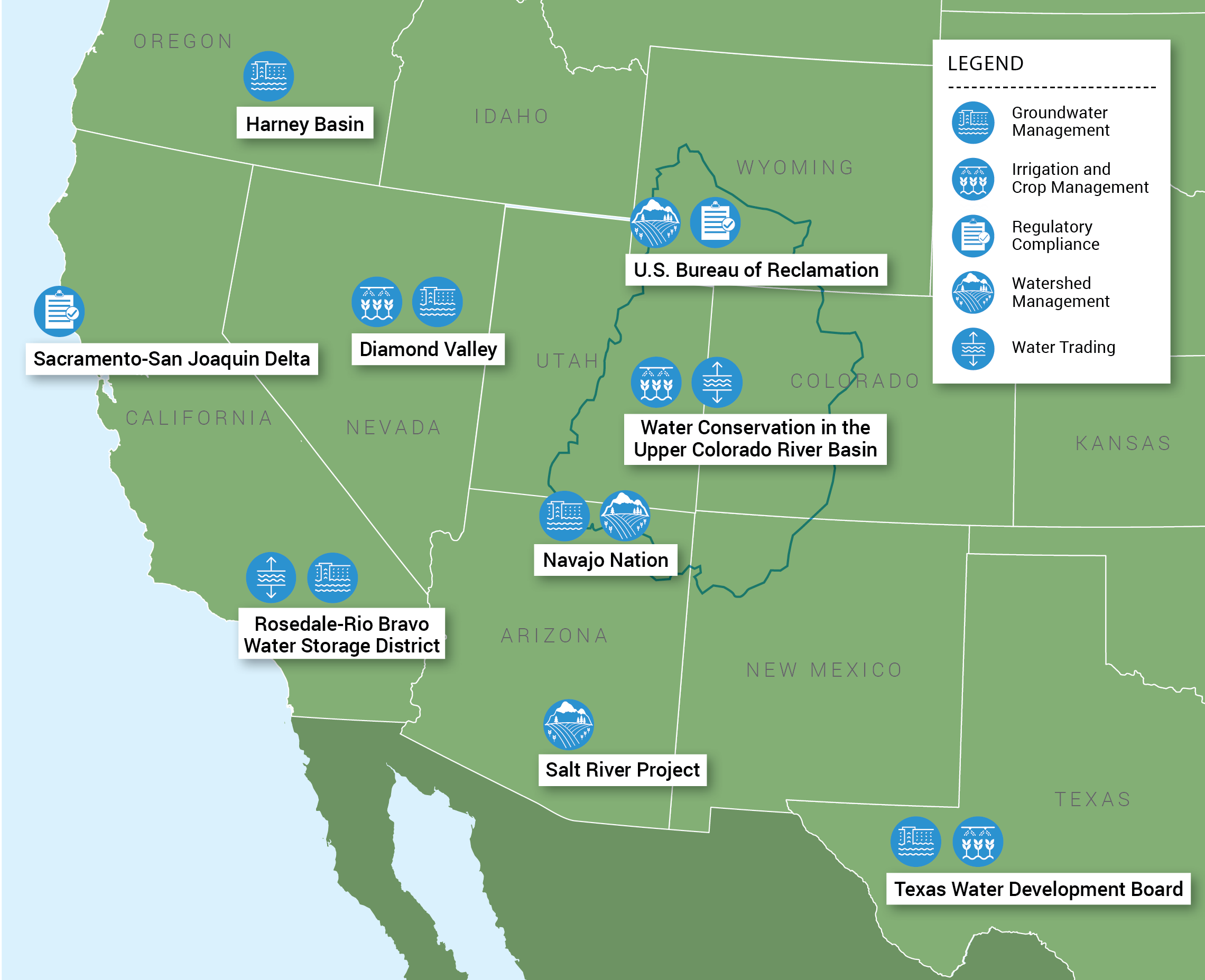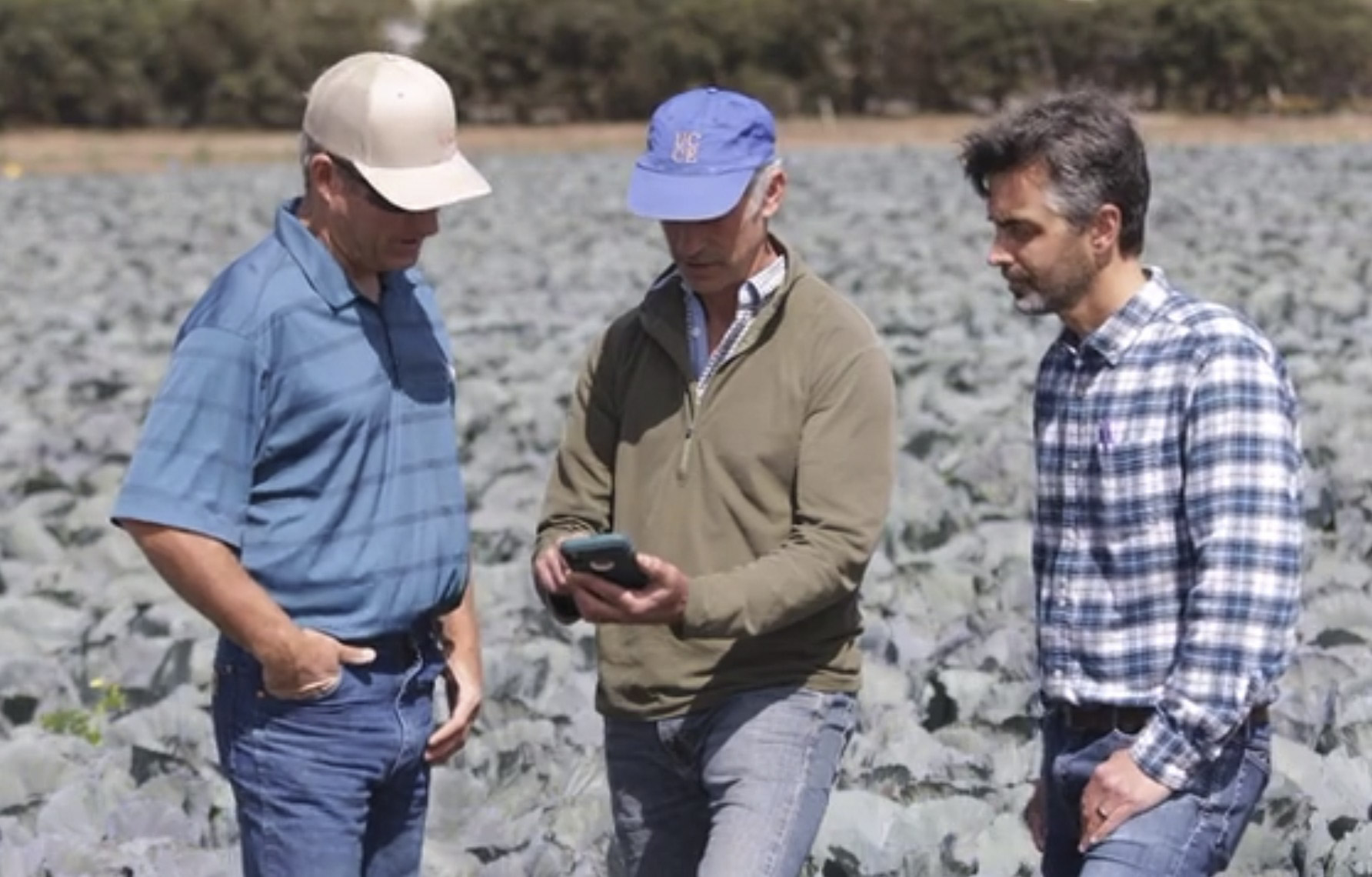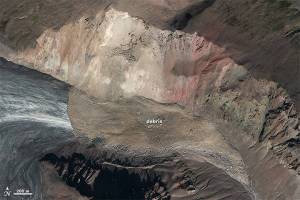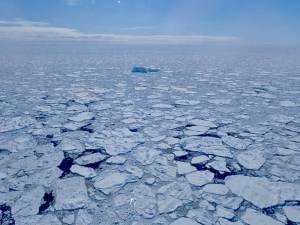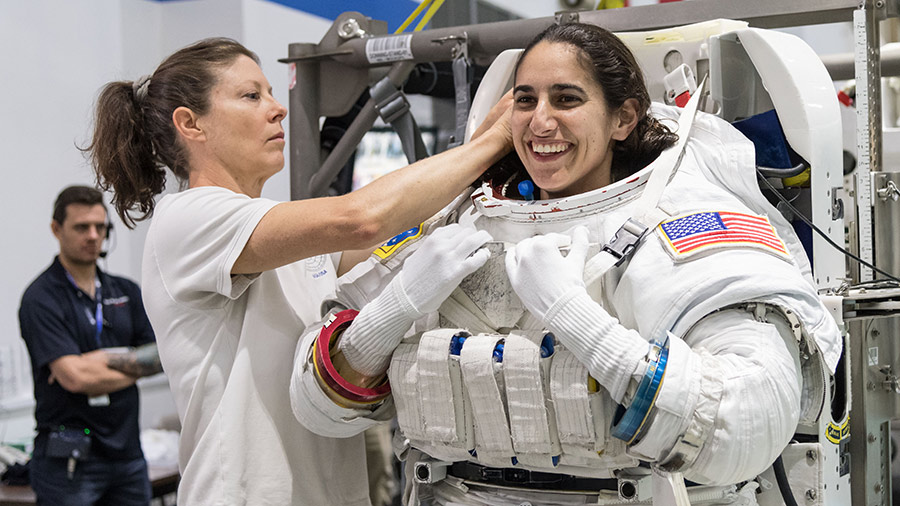15 U.S.C. CHAPTER 82 – LAND REMOTE SENSING POLICY ACT
SUBCHAPTER I – LANDSAT
Sec. 5601. Findings
The Congress finds and declares the following:
(1) The continuous collection and utilization of land remote sensing data from space are of major benefit in studying and understanding human impacts on the global environment, in managing the Earth’s natural resources, in carrying out national security functions, and in planning and conducting many other activities of scientific, economic, and social importance.
(2) The Federal Government’s Landsat system established the United States as the world leader in land remote sensing technology.
(3) The national interest of the United States lies in maintaining international leadership in satellite land remote sensing and in broadly promoting the beneficial use of remote sensing data.
(4) The cost of Landsat data has impeded the use of such data for scientific purposes, such as for global environmental change research, as well as for other public sector applications.
(5) Given the importance of the Landsat program to the United States, urgent actions, including expedited procurement procedures, are required to ensure data continuity.
(6) Full commercialization of the Landsat program cannot be achieved within the foreseeable future, and thus should not serve as the near-term goal of national policy on land remote sensing; however, commercialization of land remote sensing should remain a long-term goal of United States policy.
(7) Despite the success and importance of the Landsat system, funding and organizational uncertainties over the past several years have placed its future in doubt and have jeopardized United States leadership in land remote sensing.
(8) Recognizing the importance of the Landsat program in helping to meet national and commercial objectives, the President approved, on February 11, 1992, a National Space Policy Directive which was developed by the National Space Council and commits the United States to ensuring the continuity of Landsat coverage into the 21st century.
(9) Because Landsat data are particularly important for national security purposes and global environmental change research, management responsibilities for the program should be transferred from the Department of Commerce to an integrated program management involving the Department of Defense and the National Aeronautics and Space Administration.
(10) Regardless of management responsibilities for the Landsat program, the Nation’s broad civilian, national security, commercial, and foreign policy interests in remote sensing will best be served by ensuring that Landsat remains an unclassified program that operates according to the principles of open skies and nondiscriminatory access.
(11) Technological advances aimed at reducing the size and weight of satellite systems hold the potential for dramatic reductions in the cost, and substantial improvements in the capabilities, of future land remote sensing systems, but such technological advances have not been demonstrated for land remote sensing and therefore cannot be relied upon as the sole means of achieving data continuity for the Landsat program.
(12) A technology demonstration program involving advanced remote sensing technologies could serve a vital role in determining the design of a follow-on spacecraft to Landsat 7, while also helping to determine whether such a spacecraft should be funded by the United States Government, by the private sector, or by an international consortium.
(13) To maximize the value of the Landsat program to the American public, unenhanced Landsat 4 through 6 data should be made available, at a minimum, to United States Government agencies, to global environmental change researchers, and to other researchers who are financially supported by the United States Government, at the cost of fulfilling user requests, and unenhanced Landsat 7 data should be made available to all users at the cost of fulfilling user requests.
(14) To stimulate development of the commercial market for unenhanced data and value-added services, the United States Government should adopt a data policy for Landsat 7 which allows competition within the private sector for distribution of unenhanced data and value-added services.
(15) Development of the remote sensing market and the provision of commercial value-added services based on remote sensing data should remain exclusively the function of the private sector.
(16) It is in the best interest of the United States to maintain a permanent, comprehensive Government archive of global Landsat and other land remote sensing data for long-term monitoring and study of the changing global environment.
(Pub. L. 102-555, Sec. 2, Oct. 28, 1992, 106 Stat. 4163.)
Land Remote Sensing Policy Act of 1992
Short Title: Section 1 of Pub. L. 102-555 provided that: “This Act [enacting this chapter and repealing chapter 68 (Sec. 4201 et seq.) of this title] may be cited as the `Land Remote Sensing Policy Act of 1992′.”
Sec. 5602. Definitions
In this chapter, the following definitions apply:
(1) The term ”Administrator” means the Administrator of the National Aeronautics and Space Administration.
(2) The term ”cost of fulfilling user requests” means the incremental costs associated with providing product generation, reproduction, and distribution of unenhanced data in response to user requests and shall not include any acquisition, amortization, or depreciation of capital assets originally paid for by the United States Government or other costs not specifically attributable to fulfilling user requests.
(3) The term ”data continuity” means the continued acquisition and availability of unenhanced data which are, from the point of view of the user
(A) sufficiently consistent (in terms of acquisition geometry, coverage characteristics, and spectral characteristics) with previous Landsat data to allow comparisons for global and regional change detection and characterization; and
(B) compatible with such data and with methods used to receive and process such data.
(4) The term ”data preprocessing” may include –
(A) rectification of system and sensor distortions in land remote sensing data as it is received directly from the satellite in preparation for delivery to a user;
(B) registration of such data with respect to features of the Earth; and
(C) calibration of spectral response with respect to such data, but does not include conclusions, manipulations, or calculations derived from such data, or a combination of such data with other data.
(5) The term ”land remote sensing” means the collection of data which can be processed into imagery of surface features of the Earth from an unclassified satellite or satellites, other than an operational United States Government weather satellite.
(6) The term ”Landsat Program Management” means the integrated program management structure –
(A) established by, and responsible to, the Administrator and the Secretary of Defense pursuant to section 5611(a) of this title; and
(B) consisting of appropriate officers and employees of the National Aeronautics and Space Administration, the Department of Defense, and any other United States Government agencies the President designates as responsible for the Landsat program.
(7) The term ”Landsat system” means Landsats 1, 2, 3, 4, 5, and 6, and any follow-on land remote sensing system operated and owned by the United States Government, along with any related ground equipment, systems, and facilities owned by the United States Government.
(8) The term ”Landsat 6 contractor” means the private sector entity which was awarded the contract for spacecraft construction, operations, and data marketing rights for the Landsat 6 spacecraft.
(9) The term ”Landsat 7” means the follow-on satellite to Landsat 6.
(10) The term ”National Satellite Land Remote Sensing Data Archive” means the archive established by the Secretary of the Interior pursuant to the archival responsibilities defined in section 5652 of this title.
(11) The term ”noncommercial purposes” refers to those activities undertaken by individuals or entities on the condition, upon receipt of unenhanced data, that –
(A) such data shall not be used in connection with any bid for a commercial contract, development of a commercial product, or any other non-United States Government activity that is expected, or has the potential, to be profitmaking;
(B) the results of such activities are disclosed in a timely and complete fashion in the open technical literature or other method of public release, except when such disclosure by the United States Government or its contractors would adversely affect the national security or foreign policy of the United States or violate a provision of law or regulation; and
(C) such data shall not be distributed in competition with unenhanced data provided by the Landsat 6 contractor.
(12) The term ”Secretary” means the Secretary of Commerce.
(13) The term ”unenhanced data” means land remote sensing signals or imagery products that are unprocessed or subject only to data preprocessing.
(14) The term ”United States Government and its affiliated users” means –
(A) United States Government agencies;
(B) researchers involved with the United States Global Change Research Program and its international counterpart programs; and
(C) other researchers and international entities that have signed with the United States Government a cooperative agreement involving the use of Landsat data for noncommercial purposes.
(Pub. L. 102-555, Sec. 3, Oct. 28, 1992, 106 Stat. 4164.)
Sec. 5611. Landsat Program Management
(a) Establishment
The Administrator and the Secretary of Defense shall be responsible for management of the Landsat program. Such responsibility shall be carried out by establishing an integrated program management structure for the Landsat system.
(b) Management plan
The Administrator, the Secretary of Defense, and any other United States Government official the President designates as responsible for part of the Landsat program, shall establish, through a management plan, the roles, responsibilities, and funding expectations for the Landsat Program (FOOTNOTE 1) of the appropriate United States Government agencies. The management plan shall – (FOOTNOTE 1) So in original. Probably should not be capitalized.
(1) specify that the fundamental goal of the Landsat Program Management is the continuity of unenhanced Landsat data through the acquisition and operation of a Landsat 7 satellite as quickly as practicable which is, at a minimum, functionally equivalent to the Landsat 6 satellite, with the addition of a tracking and data relay satellite communications capability;
(2) include a baseline funding profile that –
(A) is mutually acceptable to the National Aeronautics and Space Administration and the Department of Defense for the period covering the development and operation of Landsat 7; and
(B) provides for total funding responsibility of the National Aeronautics and Space Administration and the Department of Defense, respectively, to be approximately equal to the funding responsibility of the other as spread across the development and operational life of Landsat 7; (3) specify that any improvements over the Landsat 6 functional equivalent capability for Landsat 7 will be funded by a specific sponsoring agency or agencies, in a manner agreed to by the Landsat Program Management, if the required funding exceeds the baseline funding profile required by paragraph (2), and that additional improvements will be sought only if the improvements will not jeopardize data continuity; and
(4) provide for a technology demonstration program whose objective shall be the demonstration of advanced land remote sensing technologies that may potentially yield a system which is less expensive to build and operate, and more responsive to data users, than is the current Landsat system.
(c) Responsibilities
The Landsat Program Management shall be responsible for –
(1) Landsat 7 procurement, launch, and operations;
(2) ensuring that the operation of the Landsat system is responsive to the broad interests of the civilian, national security, commercial, and foreign users of the Landsat system;
(3) ensuring that all unenhanced Landsat data remain unclassified and that, except as provided in section 5656(a) and (b) of this title, no restrictions are placed on the availability of unenhanced data;
(4) ensuring that land remote sensing data of high priority locations will be acquired by the Landsat 7 system as required to meet the needs of the United States Global Change Research Program, as established in the Global Change Research Act of 1990 (15 U.S.C. 2921 et seq.), and to meet the needs of national security users;
(5) Landsat data responsibilities pursuant to this chapter;
(6) oversight of Landsat contracts entered into under sections 5612 and 5613 of this title;
(7) coordination of a technology demonstration program, pursuant to section 5633 of this title; and
(8) ensuring that copies of data acquired by the Landsat system are provided to the National Satellite Land Remote Sensing Data Archive.
(d) Authority to contract
The Landsat Program Management may, subject to appropriations and only under the existing contract authority of the United States Government agencies that compose the Landsat Program Management, enter into contracts with the private sector for services such as, but not limited to, satellite operations and data preprocessing.
(e) Landsat advisory process
(1) Establishment
The Landsat Program Management shall seek impartial advice and comments regarding the status, effectiveness, and operation of the Landsat system, using existing advisory committees and other appropriate mechanisms. Such advice shall be sought from individuals who represent –
(A) a broad range of perspectives on basic and applied science and operational needs with respect to land remote sensing data;
(B) the full spectrum of users of Landsat data, including representatives from United States Government agencies, State and local government agencies, academic institutions, nonprofit organizations, value-added companies, the agricultural, mineral extraction, and other user industries, and the public, and
(C) a broad diversity of age groups, sexes, and races.
(2) Reports
Within 1 year after October 28, 1992, and biennially thereafter, the Landsat Program Management shall prepare and submit a report to the Congress which –
(A) reports the public comments received pursuant to paragraph (1); and
(B) includes –
(i) a response to the public comments received pursuant to paragraph (1);
(ii) information on the volume of use, by category, of data from the Landsat system; and
(iii) any recommendations for policy or programmatic changes to improve the utility and operation of the Landsat system.
(Pub. L. 102-555, title I, Sec. 101, Oct. 28, 1992, 106 Stat. 4166.)
References in Text
The Global Change Research Act of 1990, referred to in subsec. (c)(4), is Pub. L. 101-606, Nov. 16, 1990, 104 Stat. 3096, which is classified generally to chapter 56A (Sec. 2921 et seq.) of this title. For complete classification of this Act to the Code, see Short Title note set out under section 2921 of this title and Tables.
Landsat Remote-Sensing Satellite Program. Pub. L. 103-139, title VIII, Sec. 8060, Nov. 11, 1993, 107 Stat. 1453, authorized Department of Defense to develop and procure the Landsat 7 vehicle, prior to repeal by Pub. L. 103-335, title VIII, Sec. 8051, Sept. 30, 1994, 108 Stat. 2629. Similar provisions were contained in the following prior acts: Pub. L. 102-484, div. A, title II, Sec. 243, Oct. 23, 1992, 106 Stat. 2360, as amended by Pub. L. 103-35, title II, Sec. 202(a)(3), May 31, 1993, 107 Stat. 101. Pub. L. 102-396, title IX, Sec. 9082A, Oct. 6, 1992, 106 Stat. 1920.
Sec. 5612. Procurement of Landsat 7
(a) Contract negotiations
The Landsat Program Management shall, subject to appropriations and only under the existing contract authority of the United States Government agencies that compose the Landsat Program Management, expeditiously contract with a United States private sector entity for the development and delivery of Landsat 7.
(b) Development and delivery consideration
In negotiating a contract under this section for the development and delivery of Landsat 7, the Landsat Program Management shall –
(1) seek, as a fundamental objective, to have Landsat 7 operational by the expected end of the design life of Landsat 6;
(2) seek to ensure data continuity by the development and delivery of a satellite which is, at a minimum, functionally equivalent to the Landsat 6 satellite; and
(3) seek to incorporate in Landsat 7 any performance improvements required to meet United States Government needs that would not jeopardize data continuity.
(c) Notification of cost and schedule changes
The Landsat Program Management shall promptly notify the Congress of any significant deviations from the expected cost, delivery date, and launch date of Landsat 7, that are specified by the Landsat Program Management upon award of the contract under this section.
(d) United States private sector entities
The Landsat Program Management shall, for purposes of this chapter, define the term ”United States private sector entities”, taking into account the location of operations, assets, personnel, and other such factors. (Pub. L. 102-555, title I, Sec. 102, Oct. 28, 1992, 106 Stat. 4168.)
Sec. 5613. Data policy for Landsat 4 through 6
(a) Contract negotiations
Within 30 days after October 28, 1992, the Landsat Program Management shall enter into negotiations with the Landsat 6 contractor to formalize an arrangement with respect to pricing, distribution, acquisition, archiving, and availability of unenhanced data for which the Landsat 6 contractor has responsibility under its contract. Such arrangement shall provide for a phased transition to a data policy consistent with the Landsat 7 data policy (developed pursuant to section 5615 of this title) by the date of initial operation of Landsat 7. Conditions of the phased arrangement should require that the Landsat 6 contractor adopt provisions so that by the final phase of the transition period –
(1) such unenhanced data shall be provided, at a minimum, to the United States Government and its affiliated users at the cost of fulfilling user requests, on the condition that such unenhanced data are used solely for noncommercial purposes;
(2) instructional data sets, selected from the Landsat data archives, will be made available to educational institutions exclusively for noncommercial, educational purposes at the cost of fulfilling user requests;
(3) Landsat data users are able to acquire unenhanced data contained in the collective archives of foreign ground stations as easily and affordably as practicable;
(4) adequate data necessary to meet the needs of global environmental change researchers and national security users are acquired;
(5) the United States Government and its affiliated users shall not be prohibited from reproduction or dissemination of unenhanced data to other agencies of the United States Government and other affiliated users, on the condition that such unenhanced data are used solely for noncommercial purposes;
(6) nonprofit, public interest entities receive vouchers, data grants, or other such means of providing them with unenhanced data at the cost of fulfilling user requests, on the condition that such unenhanced data are used solely for noncommercial purposes;
(7) a viable role for the private sector in the promotion and development of the commercial market for value added and other services using unenhanced data from the Landsat system is preserved; and
(8) unenhanced data from the Landsat system are provided to the National Satellite Land Remote Sensing Data Archive at no more than the cost of fulfilling user requests.
(b) Failure to reach agreement
If negotiations under subsection (a) of this section have not, by September 30, 1993, resulted in an agreement that the Landsat Program Management determines generally achieves the goals stated in subsection (b)(1) through (8) of this section, the Administrator and the Secretary of Defense shall, within 30 days after the date of such determination, jointly certify and report such determination to the Congress. The report shall include a review of options and projected costs for achieving such goals, and shall include recommendations for achieving such goals. The options reviewed shall include –
(1) retaining the existing or modified contract with the Landsat 6 contractor;
(2) the termination of existing contracts for the exclusive right to market unenhanced Landsat data; and
(3) the establishment of an Alternative private sector mechanism for the marketing and commercial distribution of such data.
(Pub. L. 102-555, title I, Sec. 103, Oct. 28, 1992, 106 Stat. 4168.)
Sec. 5614. Transfer of Landsat 6 program responsibilities
The responsibilities of the Secretary with respect to Landsat 6 shall be transferred to the Landsat Program Management, as agreed to between the Secretary and the Landsat Program Management, pursuant to section 5611 of this title.
(Pub. L. 102-555, title I, Sec. 104, Oct. 28, 1992, 106 Stat. 4170.)
Sec. 5615. Data policy for Landsat 7
(a) Landsat 7 data policy
The Landsat Program Management, in consultation with other appropriate United States Government agencies, shall develop a data policy for Landsat 7 which should –
(1) ensure that unenhanced data are available to all users at the cost of fulfilling user requests;
(2) ensure timely and dependable delivery of unenhanced data to the full spectrum of civilian, national security, commercial, and foreign users and the National Satellite Land Remote Sensing Data Archive;
(3) ensure that the United States retains ownership of all unenhanced data generated by Landsat 7;
(4) support the development of the commercial market for remote sensing data;
(5) ensure that the provision of commercial value-added services based on remote sensing data remains exclusively the function of the private sector; and
(6) to the extent possible, ensure that the data distribution system for Landsat 7 is compatible with the Earth Observing System Data and Information System.
(b) Additional data policy considerations
In addition, the data policy for Landsat 7 may provide for –
(1) United States private sector entities to operate ground receiving stations in the United States for Landsat 7 data;
(2) other means for direct access by private sector entities to unenhanced data from Landsat 7; and
(3) the United States Government to charge a per image fee, license fee, or other such fee to entities operating ground receiving stations or distributing Landsat 7 data.
(c) Landsat 7 Data Policy Plan
Not later than July 15, 1994, the Landsat Program Management shall develop and submit to Congress a report that contains a Landsat 7 Data Policy Plan. This plan shall define the roles and responsibilities of the various public and private sector entities distribution, and archiving of Landsat 7 data and in operations of the Landsat 7 spacecraft.
(d) Reports
Not later than 12 months after submission of the Landsat 7 Data Policy Plan, required by subsection (c) of this section, and annually thereafter until the launch of Landsat 7, the Landsat Program Management, in consultation with representatives of appropriate United States Government agencies, shall prepare and submit a report to the Congress which –
(1) provides justification for the Landsat 7 data policy in terms of the civilian, national security, commercial, and foreign policy needs of the United States; and
(2) provides justification for any elements of the Landsat 7 data policy which are not consistent with the provisions of subsection (a) of this section.
(Pub. L. 102-555, title I, Sec. 105, Oct. 28, 1992, 106 Stat. 4170.)
SUBCHAPTER III – RESEARCH, DEVELOPMENT, AND DEMONSTRATION
Sec. 5631. Continued Federal research and development
(a) Roles of NASA and Department of Defense
(1) The Administrator and the Secretary of Defense are directed to continue and to enhance programs of remote sensing research and development.
(2) The Administrator is authorized and encouraged to –
(A) conduct experimental space remote sensing programs (including applications demonstration programs and basic research at universities);
(B) develop remote sensing technologies and techniques, including those needed for monitoring the Earth and its environment; and
(C) conduct such research and development in cooperation with other United States Government agencies and with public and private research entities (including private industry, universities, non-profit organizations, State and local governments, foreign governments, and international organizations) and to enter into arrangements (including joint ventures) which will foster such cooperation.
(b) Roles of Department of Agriculture and Department of the Interior
(1) In order to enhance the ability of the United States to manage and utilize its renewable and nonrenewable resources, the Secretary of Agriculture and the Secretary of the Interior are authorized and encouraged to conduct programs of research and development in the applications of remote sensing using funds appropriated for such purposes.
(2) Such programs may include basic research at universities, demonstrations of applications, and cooperative activities involving other Government agencies, private sector parties, and foreign and international organizations.
(c) Role of other Federal agencies
Other United States Government agencies are authorized and encouraged to conduct research and development on the use of remote sensing in the fulfillment of their authorized missions, using funds appropriated for such purposes.
(Pub. L. 102-555, title III, Sec. 301, Oct. 28, 1992, 106 Stat. 4174.)
Sec. 5632. Availability of federally gathered unenhanced data
(a) General rule
All unenhanced land remote sensing data gathered and owned by the United States Government, including unenhanced data gathered under the technology demonstration program carried out pursuant to section 5633 of this title, shall be made available to users in a timely fashion.
(b) Protection for commercial data distributor
The President shall seek to ensure that unenhanced data gathered under the technology demonstration program carried out pursuant to section 5633 of this title shall, to the extent practicable, be made available on terms that would not adversely affect the commercial market for unenhanced data gathered by the Landsat 6 spacecraft.
(Pub. L. 102-555, title III, Sec. 302, Oct. 28, 1992, 106 Stat. 4174.)
Sec. 5633. Technology demonstration program
(a) Establishment
As a fundamental component of a national land remote sensing strategy, the President shall establish, through appropriate United States Government agencies, a technology demonstration program. The goals of such programs shall be to –
(1) seek to launch advanced land remote sensing system components within 5 years after October 28, 1992;
(2) demonstrate within such 5-year period advanced sensor capabilities suitable for use in the anticipated land remote sensing program; and
(3) demonstrate within such 5-year period an advanced land remote sensing system design that could be less expensive to procure and operate than the Landsat system projected to be in operation through the year 2000, and that therefore holds greater potential for private sector investment and control.
(b) Execution of program
In executing the technology demonstration program, the President shall seek to apply technologies associated with United States National Technical Means of intelligence gathering, to the extent that such technologies are appropriate for the technology demonstration and can be declassified for such purposes without causing adverse harm to United States national security interests.
(c) Broad application
To the greatest extent practicable, the technology demonstration program established under subsection (a) of this section shall be designed to be responsive to the broad civilian, national security, commercial, and foreign policy needs of the United States.
(d) Private sector funding
The technology demonstration program under this section may be carried out in part with private sector funding.
(e) Landsat Program Management coordination
The Landsat Program Management shall have a coordinating role in the technology demonstration program carried out under this section.
(f) Report to Congress
The President shall assess the progress of the technology demonstration program under this section and, within 2 years after October 28, 1992, submit a report to the Congress on such progress.
(Pub. L. 102-555, title III, Sec. 303, Oct. 28, 1992, 106 Stat. 4174.)
SUBCHAPTER IV – ASSESSING OPTIONS FOR SUCCESSOR LAND REMOTE SENSING SYSTEM
Sec. 5641. Assessing options for successor land remote sensing system
(a) Assessment
Within 5 years after October 28, 1992, the Landsat Program Management, in consultation with representatives of appropriate United States Government agencies, shall assess and report to the Congress on the options for a successor land remote sensing system to Landsat 7. The report shall include a full assessment of the advantages and disadvantages of –
(1) private sector funding and management of a successor land remote sensing system;
(2) establishing an international consortium for the funding and management of a successor land remote sensing system;
(3) funding and management of a successor land remote sensing system by the United States Government; and
(4) a cooperative effort between the United States Government and the private sector for the funding and management of a successor land remote sensing system.
(b) Goals
In carrying out subsection (a) of this section, the Landsat Program Management shall consider the ability of each of the options to –
(1) encourage the development, launch, and operation of a land remote sensing system that adequately serves the civilian, national security commercial, and foreign policy interests of the United States;
(2) encourage the development, launch, and operation of a land remote sensing system that maintains data continuity with the Landsat system; and
(3) incorporate system enhancements, including any such enhancements developed under the technology demonstration program under section 5633 of this title, which may potentially yield a system that is less expensive to build and operate, and more responsive to data users, than is the Landsat system projected to be in operation through the year 2000.
(c) Preference for private sector system
If a successor land remote sensing system to Landsat 7 can be funded and managed by the private sector while still achieving the goals stated in subsection (b) of this section without jeopardizing the domestic, national security, and foreign policy interests of the United States, preference should be given to the development of such a system by the private sector without competition from the United States Government.
(Pub. L. 102-555, title IV, Sec. 401, Oct. 28, 1992, 106 Stat. 4175.)
Powered by WPeMatico
Get The Details…
Mia N. Concilus



